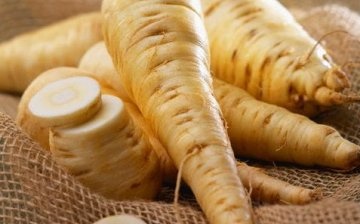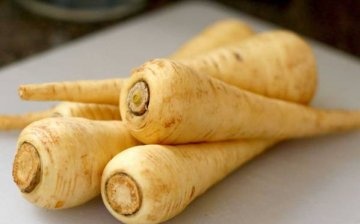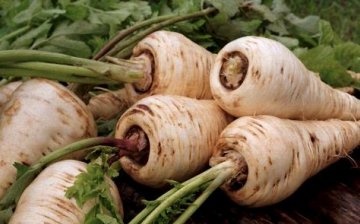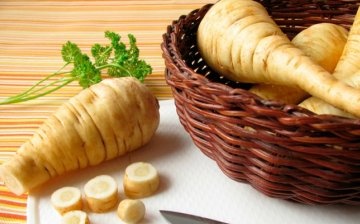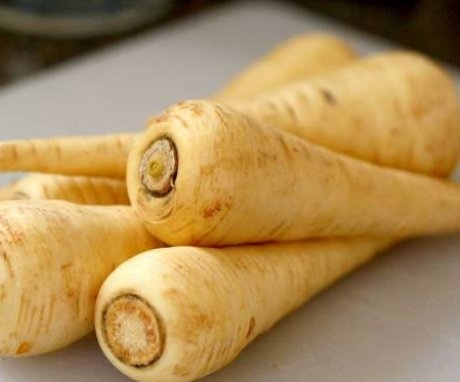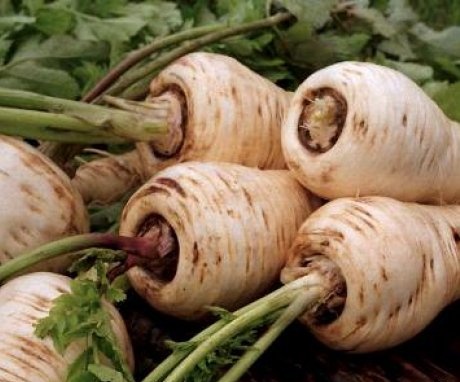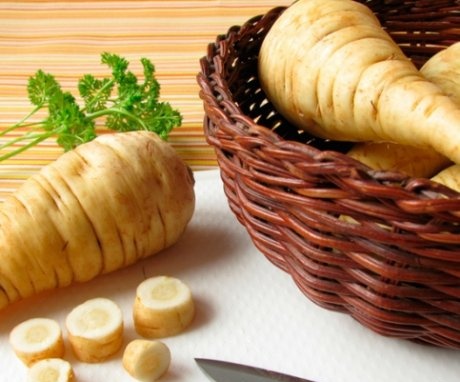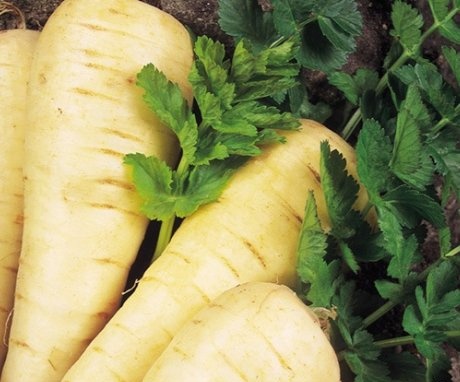What kind of vegetable is parsnip: photos, care features and useful properties
Parsnip - vegetable, known for a long time. Even the ancient tribes of the Indians grew this root crop because of its nutritional value and benefits. It is not possible to establish exactly the homeland of this vegetable, the useful properties of the root crop were established in antiquity. It is only known that it originates somewhere in Europe. Before potatoes took one of the first places among vegetables, in European countries most vegetable dishes were prepared from parsnips. Until now, in England, this vegetable is a must on the Christmas table.
Content:
- What is this vegetable: history and description
- Growing parsnips
- Benefits of parsnips and recipes
- Harm of parsnips, contraindications
What is this vegetable: history and description
Parsnip belongs to those vegetables, which are little known in Russia. But in Europe, this root crop grows wild and is widespread. The parsnip is a herbaceous biennial plant with many umbrella-like inflorescences. They eat a large root vegetable that looks like a mixture radish and carrots.
It has an elongated shape, white or yellowish color, sweetish taste, with a pleasant spicy smell.
The first cultivated parsnips were small in size, no more than medium carrots. But after its widespread distribution, it was possible to bring out larger root crops. At first it was grown only in tropical climates, but then they noticed that in temperate climates it grows better and the roots are larger.
We learned about parsnips only in the 17th century. At that time it was called "field borscht". Of this distant relative carrots and celery are also called pustarnak, white carrot or popovnik. It contains a large amount of vitamins, minerals, essential oils and is also low in calories. Wild parsnips are not eaten as they are toxic. If you don't grow it yourself, choose your root vegetables carefully when purchasing. The whiter and lighter the better. Too large root vegetables will be too tough and tasteless.
Growing parsnips
It is now fashionable to grow rare vegetables and fruits... Parsnips are perfect to surprise your neighbors. It is unpretentious in care and at the same time is very useful.
The main difficulty lies in finding this very parsnip. It is not so common in our country. If you still manage to get the seeds, you can then collect them yourself and plant again.
Despite the simplicity of growing, some recommendations must be followed:
- Buy more seed... They sprout poorly, half will sprout at best. The seeds remain fresh for only a year, after that it makes no sense to plant them at all.
- Parsnips in the first year of planting only give root crops, and in the second year, if these root crops are left, they will the seeds... To do this, leave some roots in the ground for the winter.
- It is necessary to plant parsnip seeds in the spring before extreme heat, preferably in early spring, in light fertile soil in a sunny place. There should be a distance of at least 40 cm between the rows.When the first bushes and leaves appear, the bed will need to be thinned so that there is at least 15 cm between the plants.
- At first, growth will be slow. Care is about the same as for carrots. It is necessary regularly to water thin it out, loosen the ground, feed it (just not with fresh manure). Parsnips love moisture, but try not to overdo it. Branches appear from the manure on the root crop, from which it loses some of its qualities.
- For the best harvest use seedlings... Grow 2-3 families in a small container, and then plant only strong and healthy plants in the ground.
- Take care of the plant only with rubber gloves. The ground part of the parsnip is rich in essential oils. When they get on the skin, they cause irritation, rash, and burns.
- Watering is desirable in the evening, abundantly, but not too often.
- Harvested in the fall. It is better to use not a shovel, but a pitchfork for this purpose, as it is less likely that you will damage the roots. The tops must be cut off, and the root crop itself must be thoroughly dried before storage.
Benefits of parsnips and recipes
The properties of parsnips are similar to those of ginseng. It contains many vitamins, potassium, phosphorus. It tones, strengthens the immune system, improves the digestive function, has an analgesic effect. It is also recommended to treat their cough. Parsnip decoction is used as an expectorant.
Parsnip also has a diuretic effect, strengthens the walls of blood vessels, removes stones and salt from the kidneys.
Currently, this plant is used to treat vitiligo, a skin disease that manifests itself in a violation of pigmentation and the appearance of white spots of various sizes on the skin. In this case, leaves are used. But for the treatment of internal diseases, only root crops are used.
Parsnips can also be used as a spice. And sometimes leaves are also used, although they do not exude a strong smell:
- This vegetable can be eaten fresh, so it is even healthier. To do this, just wash and gnaw it. Fresh parsnips are often combined with its cousin, carrots. The salad is seasoned with oil. A tasty and healthy dish is ready.
- You can also use it as a potato, that is, to make mashed potatoes. It turns out to be very tender and tasty, it will serve as an excellent side dish for meat dishes. But unlike potatoes, parsnips still need to be fried in a pan without oil.
- If you add parsnips to a vegetable stew, it will become softer, acquire a special pleasant smell and taste. This root vegetable goes well with any other vegetable.
- Parsnips are grilled with olive oil or deep-fried. When fresh, that part of the vegetable that is closer to the tops is slightly bitter. This is something to keep in mind when adding fresh parsnips to salads.
- You can use this root vegetable to make flavorful broths for your soup. To do this, boil it over low heat, and then remove it. The broth gets a pleasant smell and taste.
Harm of parsnips, contraindications
Of course, parsnips are rich in various vitamins and useful substances. For a healthy body, it acts as a tonic and general tonic, but for people suffering from certain diseases, the harm can be much more than good.
Parsnip is still recognized as a medicinal plant, so not always and not everyone can eat it uncontrollably.
For example:
- Its diuretic properties can be harmful if a person already has an advanced form of urolithiasis. Parsnips can provoke the excretion of stones from the body, which will cause severe sharp pain. The largest stones can block the urinary tract. In this case, you cannot do without an ambulance.
- Parsnips contain a substance that increases the sensitivity of the skin to sunlight.Therefore, if the skin is already white and sensitive or there is already a skin disease accompanied by hypersensitivity, it is advisable to refuse to use this vegetable.
- Pure parsnips are not recommended for children under 5 years of age. However, opinions differ on this score. In Germany, it is with this vegetable that the first complementary foods begin. Of course, it undergoes a special heat treatment. In a small amount in the form of a puree, parsnips will not do much harm, however, pediatricians strongly recommend refraining from such food, since the child may develop a strong allergic reaction. Even more, nursing mothers cannot eat it.
- Elderly people, people with blood diseases and hypertensive patients should also refrain from eating this vegetable. Although it is often used to treat these conditions, it is advisable to consult a doctor before using it as some stages of the disease cannot be treated this way.
More information can be found in the video.



